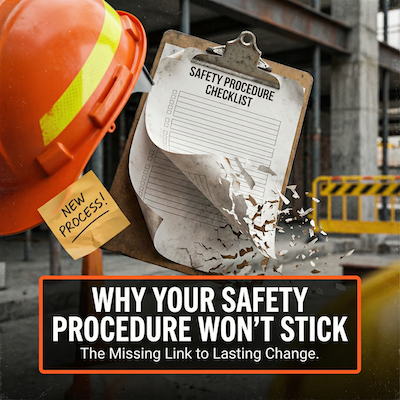Technological Innovations Reshaping Construction Safety
The construction industry has been revolutionized by an array of emerging technologies, each contributing to improved safety and risk management on job sites. In 2023, these innovations continue to advance, shaping the future of construction safety.
Wearable Technology: Monitoring Worker Health and Safety
Wearable devices, including smart helmets and vests, track biometric data to provide real-time insights into workers' health and safety on construction sites. These devices alert supervisors to potential hazards, ensuring a safer work environment. Andrew Anagnost, CEO of Autodesk, eloquently stated, "The Internet of Things will change the construction industry by providing real-time access to data about what's happening on the job site."

Drones and Robotics: Streamlining Site Inspections and Hazard Detection
Drones and robotics have become indispensable in construction safety. These technologies perform site inspections and execute tasks in hazardous conditions, minimizing risks for human workers. As Elon Musk, CEO of Tesla and SpaceX, observed, "Automation will increasingly play a role in improving safety, efficiency, and productivity in the construction industry."

Virtual Reality: Improving Worker Training and Preparedness
Virtual reality (VR) and simulation technologies allow construction workers to undergo immersive, realistic training without the dangers associated with live construction sites. This novel approach enhances workers' skills and better prepares them for real-life situations.

The Impact of Positive Reinforcement on Safety Culture
The Science of Reinforcement and Its Application in Construction
The principles of positive reinforcement, rooted in the field of psychology, have been successfully applied to the construction industry. By recognizing and rewarding safe behaviors and attitudes, companies can cultivate a safety culture that motivates workers to prioritize safety on the job.
Incentivizing Safe Practices: The Power of Recognition and Rewards
Incentive programs, such as those implemented by Scratchie, offer tangible rewards and recognition to workers who demonstrate safety-conscious behavior. This approach not only encourages adherence to safety protocols but also fosters a sense of camaraderie and teamwork among employees.

Industry Leaders: Companies Spearheading the Integration of Technology and Reinforcement
Innovative companies like Scratchie and Procore are leading the charge in integrating technology and positive reinforcement to revolutionize construction safety. By embracing these advancements, these industry leaders set a high standard for safety culture that others can follow.
The Synergy of Technology and Positive Reinforcement in Construction Safety
The Path Forward: Embracing Change and Integration
To maximize the benefits of technology and reinforcement, construction companies must be willing to adapt and integrate these innovations into their safety management systems. Embracing change is crucial to maintaining a competitive edge and ensuring the well-being of workers.
Anticipating Future Developments in Construction Safety
As the industry continues to evolve, we can expect further advancements in construction safety technology and reinforcement strategies. From AI-powered safety analytics to gamified safety training, the future of construction safety is poised for growth and innovation.
Conclusion
The construction industry has witnessed a transformative shift in recent years, as cutting-edge technology and positive reinforcement strategies revolutionize safety culture. By embracing these innovations and fostering a safety-first mindset, construction companies can create a safer, more productive work environment for their employees.
FAQ
1. How can wearable devices improve construction safety?
Wearable devices, such as smart helmets and vests, can improve construction safety by monitoring workers' biometric data and providing real-time insights into their health and well-being on the job site. This allows supervisors to identify potential hazards and proactively address them, ensuring a safer work environment.
2. What is the role of drones and robotics in construction safety?
Drones and robotics play a growing role in construction safety by streamlining site inspections and hazard detection. They can perform tasks in hazardous conditions or hard-to-reach areas, minimizing risks for human workers and increasing overall site safety.
3. How does virtual reality and simulation contribute to safer construction sites?
Virtual reality (VR) and simulation technologies provide immersive, realistic training for construction workers without exposing them to the dangers associated with live construction sites. This advanced training method enhances workers' skills and better prepares them for real-life situations, ultimately leading to safer construction sites.
4. What are the benefits of positive reinforcement in construction safety culture?
Positive reinforcement in construction safety culture encourages the adoption of safe behaviors and attitudes among workers. By recognizing and rewarding safety-conscious actions, companies can cultivate a safety culture that motivates workers to prioritize safety on the job, ultimately reducing accidents and injuries.
5. How can incentive programs encourage safe work practices?
Incentive programs, such as those implemented by Scratchie, offer tangible rewards and recognition to workers who demonstrate safety-conscious behavior. This approach not only encourages adherence to safety protocols but also fosters a sense of camaraderie and teamwork among employees, leading to a safer work environment.
6. How does Scratchie promote a safer work environment in the construction industry?
Scratchie promotes a safer work environment by offering a platform that rewards safe behaviors and attitudes in the construction industry. By using positive reinforcement, Scratchie helps improve safety culture on construction sites and encourages workers to maintain a safety-first mindset.
7. What can construction companies do to embrace technology and reinforcement strategies in their safety practices?
Construction companies can embrace technology and reinforcement strategies by staying informed about industry advancements, investing in innovative safety solutions, and providing training for employees on the latest safety technologies and best practices. By integrating these innovations into their safety management systems, construction companies can create a safer, more productive work environment.
8. What are the potential future developments in construction safety technology and reinforcement methods?
Future developments in construction safety technology and reinforcement methods may include AI-powered safety analytics, gamified safety training, and more advanced wearable devices with enhanced monitoring capabilities. As the industry continues to evolve, we can expect these and other innovations to further improve safety and risk management in construction.










.svg)
